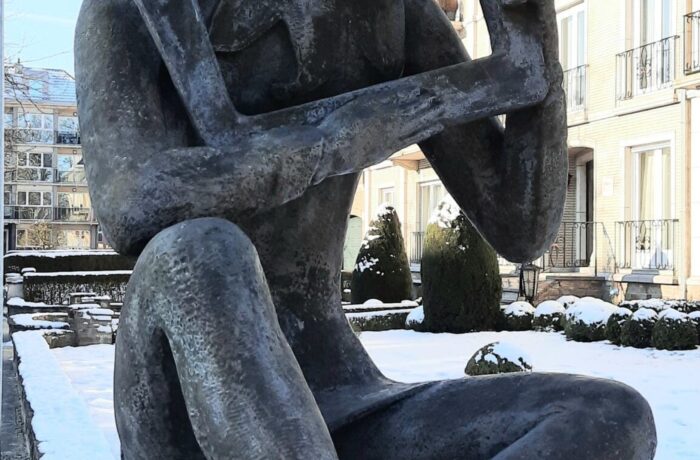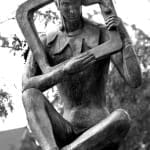UILENSPIEGEL (MARK MACKEN)
We leave the area of the Grote Markt and turn right onto the Parklaan, a wide street built in 1951 right through the Walburg Castle estate. At the left-hand side of the street the remaining part of the former gardens of the castle are now the city park and act as a green lung of the city centre. On the right-hand side, on the corner of the August Nobelsstraat, is the bronze statue of ‘Tijl Uilenspiegel’. This playful hero of a popular old story frolics and plays practical jokes. His name is a combination of ‘uil (owl)’ and ‘spiegel (mirror)’. The owl, not to be seen here, symbolises stupidity, the mirror is an object in which people can see themselves. The roguish Tijl bluntly shows people as they are, without any reticence. Thus, he ridicules the posh and the mighty. The writer Charles de Coster (1867) later presents Tijl Uilenspiegel as the freedom fighter against the Spanish rulers and the inquisition of the Catholic church.
Most people know Tijl particularly as the rascal, the jester who confronts his audience with their faults and their shortcomings. This explains why he wears a fool’s cap and holds the frame of the mirror.
To materialize his idea in this way, the artist does not avoid any challenges. The stylized character sitting cross-legged is difficult to shape and to cast in bronze. The result however is a supple and roguish unity.
MACKEN Mark (1913-1977)
Mark (Marcel) Macken, sculptor and medallist, made his debut in his father’s furniture factory. War Macken, his father, also was a painter. Mark studied woodcarving and modelling at the Academy of Leuven. In 1931 he took up his studies at the Royal Academy of Fine Arts in Antwerpen (on the recommendation of the sculptor Ernest Wijnants) and then went on to the National Higher Institute of Fine Arts in Antwerpen, as a pupil in Ernest Wijnants’ studio, until 1936. In 1935 he joined the group ‘Antwerpen’, that exhibited experimental work until 1940, e.g. in stone: Taille Directe (see sculpture 32) and sheet iron sculptures. He was a teacher of Ornamental Art at the Royal Academy of Fine Arts in Dendermonde (1941) and taught Drawing at the Athenaeums of Dendermonde, Sint-Niklaas and Brussels. In the second World War he was a member of the ‘Onafhankelijkheidsfront (Independent Front)’ and illustrated the ‘illegal’ pamphlets. From 1943 to 1945 he was deported to Germany as a political prisoner. He started as a teacher at the Academy of Fine Arts in Antwerpen in 1946 and was its head from 1962 until 1977. He won the ‘Van Lerius’ and ‘De Keyzer’ prizes and was awarded the ‘Prijs van Rome’ for Free Visual Arts in 1938 .
- Uilenspiegel
- Uilenspiegel
- Uilenspiegel
- Uilenspiegel
- Uilenspiegel
- Uilenspiegel
Kunst in de Stad - April 24th 2010







